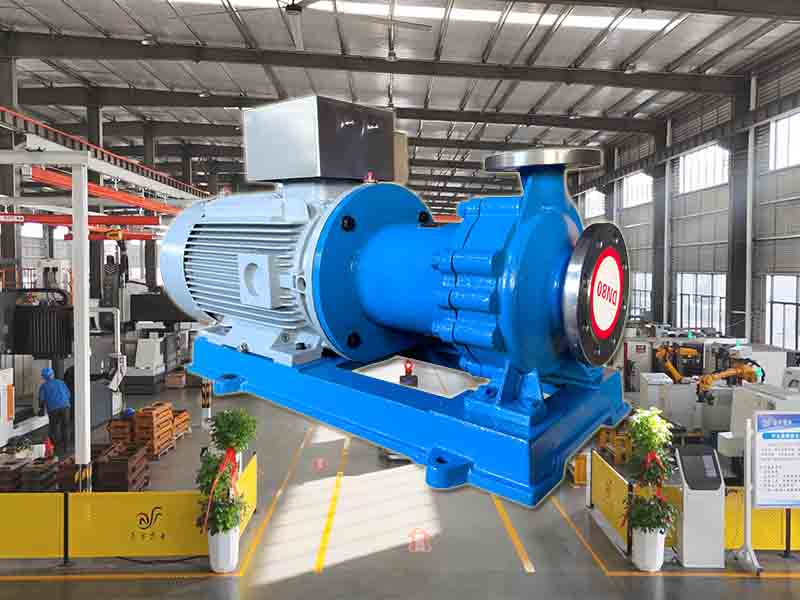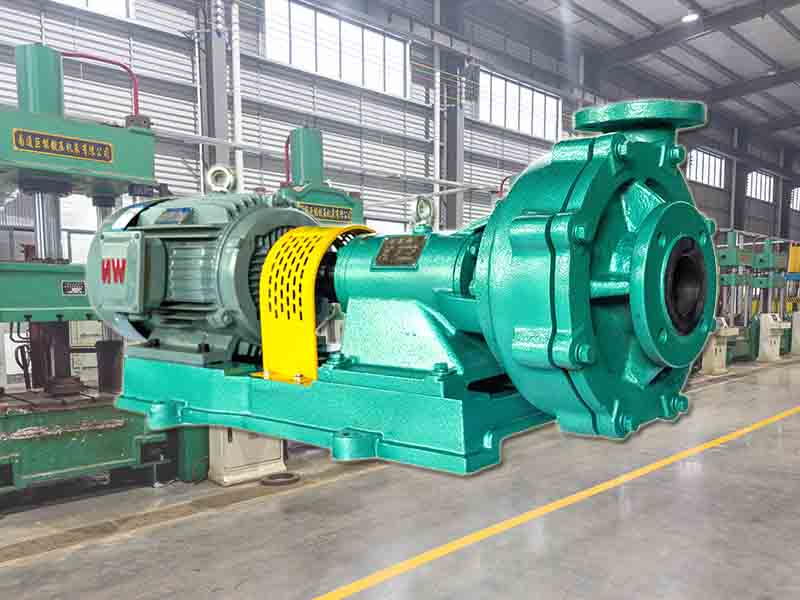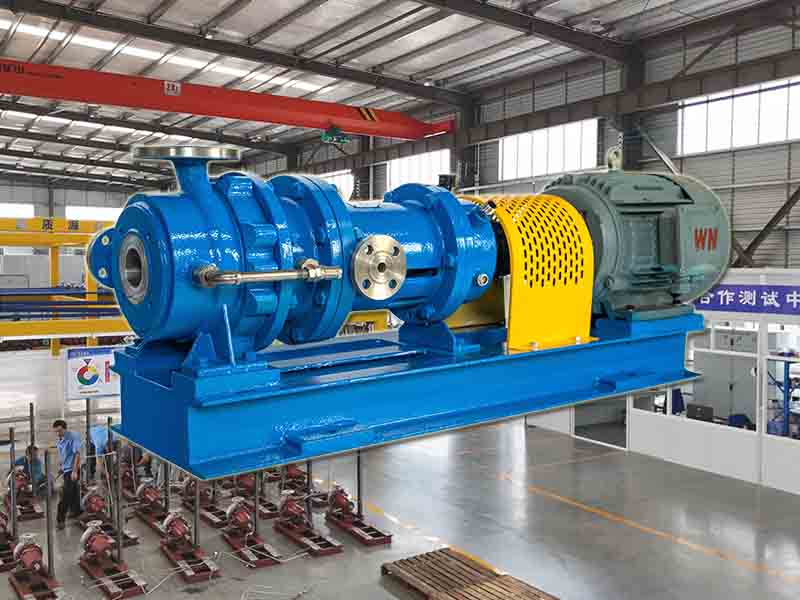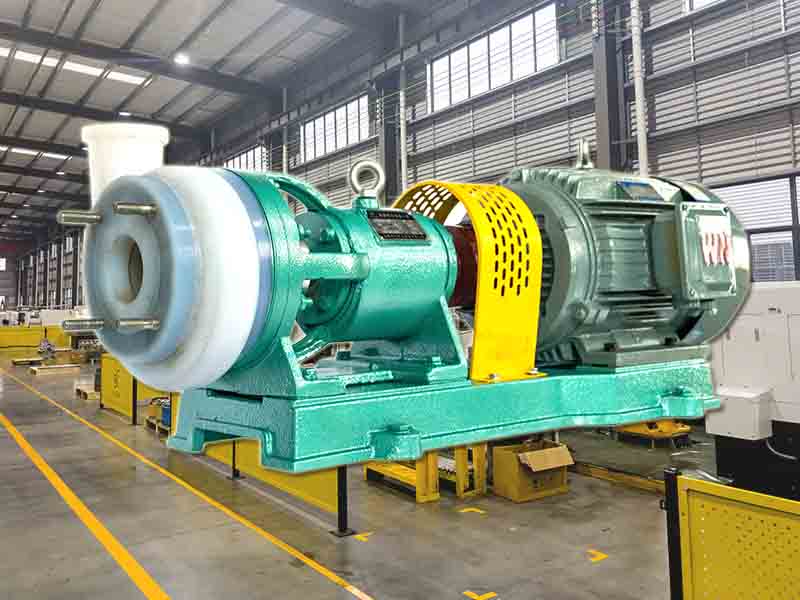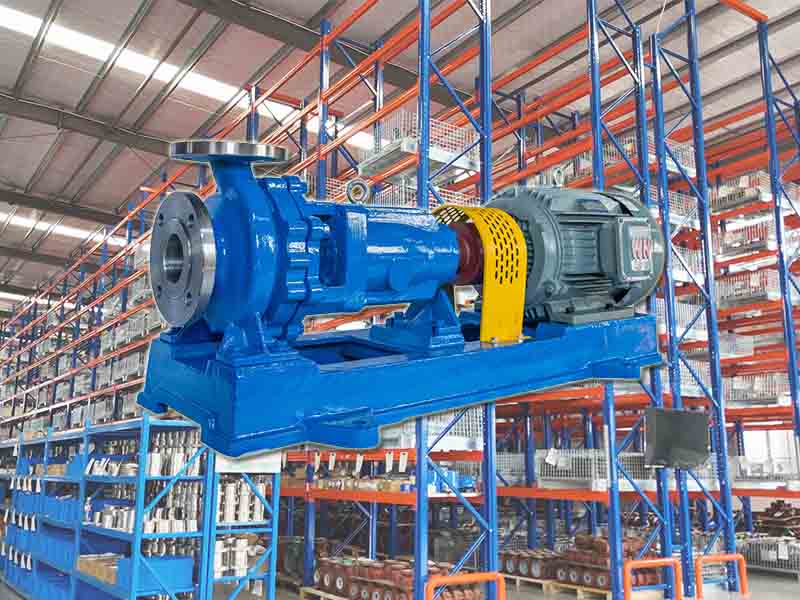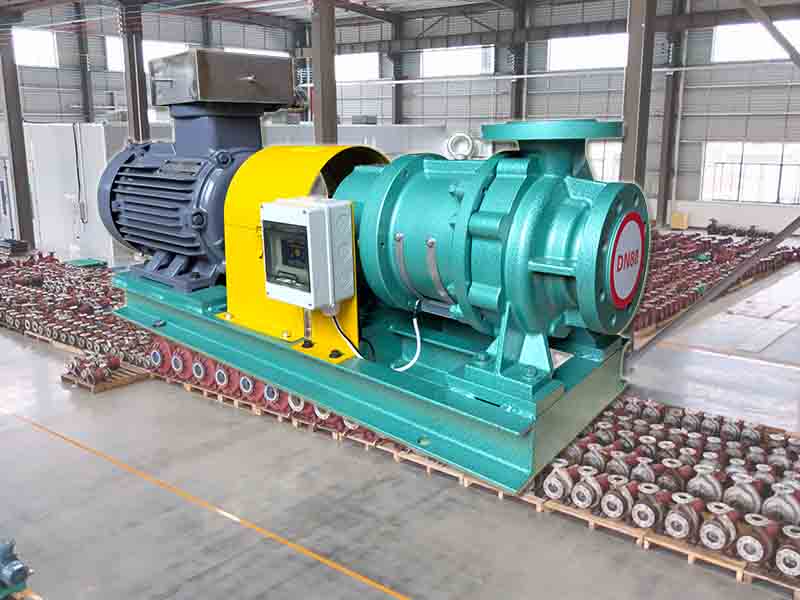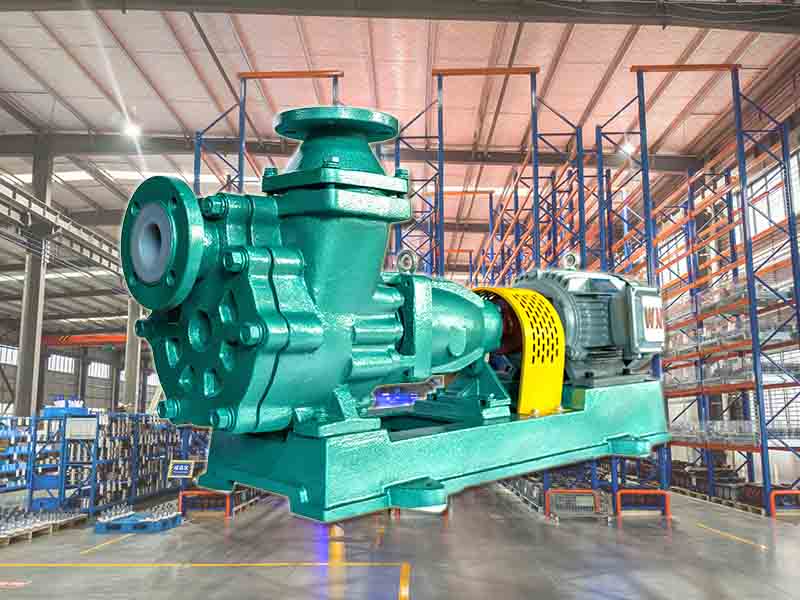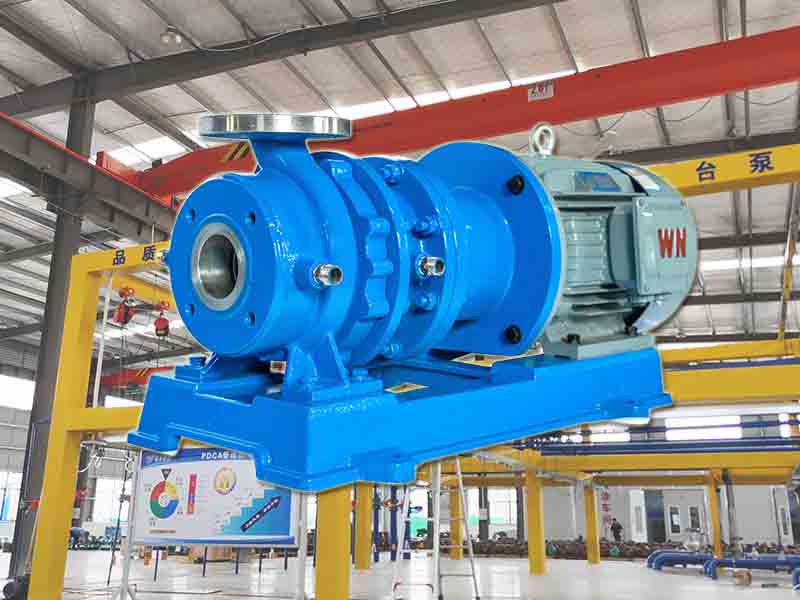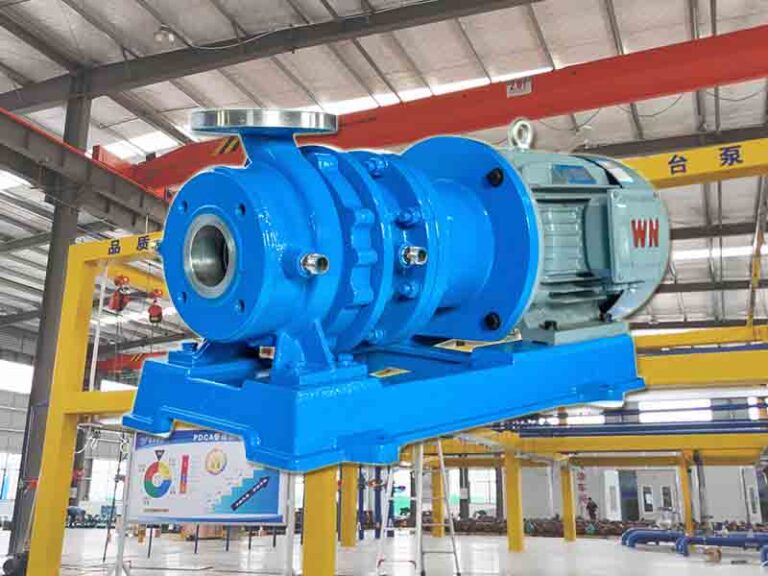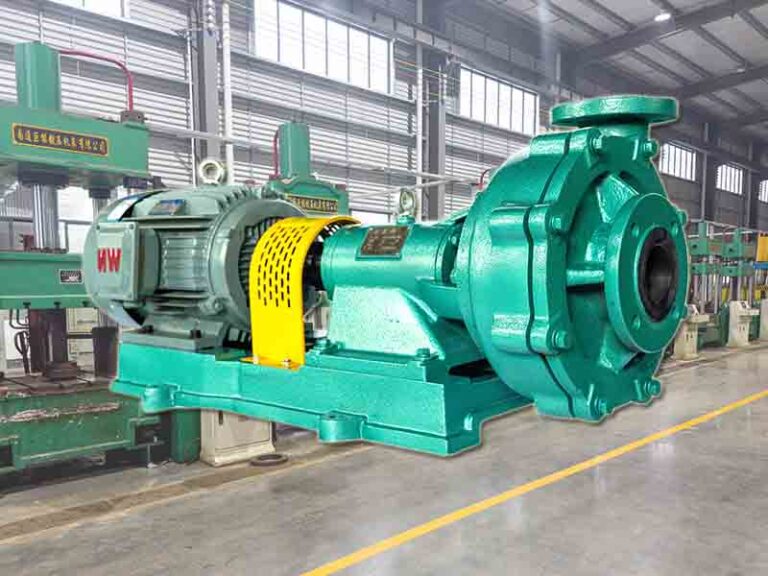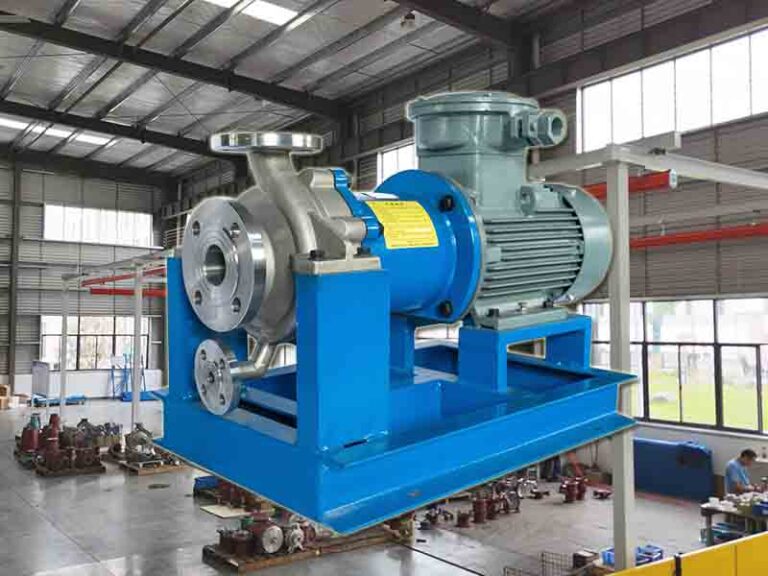In the operation of centrifugal pumps, the prevention of cavitation is always an important part of ensuring equipment stability and extended service life. The Net Positive Suction Head (NPSH) plays a key role.
Simply put, NPSH measures the “energy margin” of the liquid at the suction inlet of the pump, and by comparing it with the minimum NPSH required by the pump, it can be determined whether or not the liquid will be vaporized before entering the impeller, which will lead to cavitation problems. This article will analyze the definition of NPSH, calculation method and its role in preventing cavitation.
What is NPSH
Net Positive Suction Head, or NPSH, is a measure of the pressure exerted on the suction side of a centrifugal pump. It is expressed in feet or meters of head. Because the “head” property is independent of the density of the fluid, the pump can lift the fluid to the same height regardless of the fluid.
NPSH is defined as the total head of the fluid at the impeller centerline minus the vapor pressure of the fluid. Its role can be key, is used to identify and avoid the fluid into the pump when the vaporization of the operating conditions, fluid vaporization of this situation we call it “flash steam”.
In the chemical centrifugal pump , fluid in the impeller inlet pressure is the smallest, if the pressure here is lower than the vapor pressure of the fluid, then the formation of bubbles, these bubbles will move along the impeller blades toward the discharge. When these vapor bubbles enter a region of higher pressure, they suddenly burst, a destructive process known as cavitation. The repeated shock waves generated by this process can cause wear and tear, metal fatigue, and other problems with the impeller and pump casing.
What is Cavitation
Cavitation is what happens when the absolute pressure at the impeller inlet is lower than the vapor pressure of the liquid being conveyed. Once this occurs, vapor bubbles or “idling” as it is called, can form in the liquid. When these bubbles move from the low-pressure area near the impeller toward the high-pressure area near the discharge of the chemical pump, they will violently implode and return to the liquid state.
When these bubbles implode, sometimes a very loud thumping sound, magnetic pump operation can be heard outside it. Inside a centrifugal pump, this continuous implosion process generates shock waves that can cause considerable physical damage. Over time, cavitation can destroy both the impeller and the pump casing, as well as failing seals and bearings, affecting flow and pressure, and consuming much more power.
The Role of NPSH in Preventing Cavitation
There are two concepts of NPSH:
Net Positive Suction Head Available (NPSHa)
NPSHa is a measure of the pressure head on the suction side of a pump, which serves to maintain the fluid in a non-vaporized state. It encompasses the pressure due to the fluid flow rate, the height (static head), and the portion of the pressure that is above the vapor pressure of the fluid. the value of NPSHa is affected by a number of factors, including system design, piping configuration, and the nature of the fluid.
Required Net Positive Suction Head (NPSHr)
NPSHr represents the minimum head required for a pump to avoid cavitation and is a characteristic of the pump itself, usually provided by the pump manufacturer. Its value depends on the pump design, operating speed, and impeller type.
How to understand the role of NPSH in cavitation prevention
Simply put, as long as NPSHa > NPSHr, the liquid will not vaporize before entering the pump, and cavitation is naturally avoided. If NPSHa is lower than NPSHr, the liquid will partially turn into gas, forming bubbles at the impeller inlet and rupturing quickly, resulting in a high-frequency shock that can cause damage to the pump body.
Factors affecting NPSHa include:
Liquid temperature and vapor pressure (the higher the temperature, the higher the vapor pressure, the easier it is to vaporize);
Suction port liquid level height (the higher it is, the greater the hydrostatic pressure);
The length of the suction piping with local resistance losses such as elbows;
Whether the tank is closed (closed tanks may be negative or pressurized);
The local atmospheric pressure (low atmospheric pressure at high altitudes with a consequent decrease in NPSHa).
NPSHa is calculated as:
NPSHa=Hatm+Hstatic−Hfriction−Hvapor
Among them:
Hatm:Absolute pressure at the liquid surface (usually local atmospheric pressure, units converted to column height).
Hstatic:Height of liquid level relative to pump centerline.
Hfriction:Resistance loss in suction line.
Hvapor:Liquid vaporization pressure at operating temperature converted to liquid column height.
Assuming a 200 m altitude area, pumping room temperature water (20°C), the tank level is 3 m above the centerline of the corrosion-resistant pump, and the total loss in the suction piping is 1.5 m. Check the table to find out:
Atmospheric pressure ≈ 98 kPa ≈ 10.0 mH₂O
Vapor pressure ≈ 2.3 kPa ≈ 0.23 mH₂O
Then:
NPSHa=10.0+3.0−1.5−0.23=11.27 m
If the pump has an NPSHr of 8.0 m, the system is safe to operate and no cavitation will occur.
NPSH is essentially a measure of energy at the pump suction port. Reasonably evaluating and matching NPSHa and NPSHr is a critical step in ensuring the safe operation of acid-resistant pumps, prolonging their life, and reducing maintenance.
In the South pumps and other industrial occasions involving high temperature, high corrosion, high precision transmission needs, accurate mastery of the NPSH parameters is particularly important, we can provide customers with professional selection and technical support to ensure stable operation of the system to avoid cavitation trouble.
Challenges Associated with Cavitation
Erosion and Damage to Pump Components: Cavitation causes vapor bubbles to form in the alkali pump and then rupture, generating strong shock waves that erode and damage pump components, especially impellers, pump casings, and surfaces exposed to the ruptured bubbles.
Reduced pump efficiency: cavitation exists, the overall efficiency of the stainless steel pump will be reduced. Because when the vapor bubble rupture, it will cause uneven flow, disturbing the smooth operation of the stainless steel chemical pump, so that there will be energy loss, corrosion-resistant centrifugal pump efficiency will follow.
Maintenance costs increase: damage caused by cavitation will have to go to maintenance and repair often. Repair or replacement of damaged pump parts, it will make the downtime longer, the operating costs have increased, so preventive maintenance for timely treatment of cavitation-related problems has become particularly critical.
Noise and vibration: Cavitation can cause noise and vibration in acid centrifugal pump systems, and the sudden bursting of a vapor bubble can make a very distinctive sound, often described as a “thump” or “hammering” sound. Excessive noise and vibration doesn’t just mean cavitation, it also fatigues the structure and causes more wear and tear.
Pump operation and reliability are affected: Cavitation can cause chemical magnetic pumps to operate erratically, with fluctuations in flow, pressure, and performance becoming commonplace, and the reliability of the pump being affected. Unstable operation of the magnetic chemical pump will also have a knock-on effect on the entire system, affecting those processes and equipment downstream.
Cavitation detection and monitoring challenges: in the early detection of cavitation is quite difficult, the traditional method is no way to know in real time whether there is no cavitation, serious or not, you have to use advanced monitoring technology and sensors in order to accurately assess and respond to these challenges posed by cavitation.
Complexity of system design: design a pump system to minimize the risk of cavitation, you have to carefully consider a number of factors, such as the NPSH, the nature of the fluid, the choice of pumps and system configuration, etc., to achieve an optimal balance of these factors is quite complex, and may also have to have professional engineering knowledge to be able to do.
Environmental and economic impact: alkali-resistant chemical pump cavitation will make the water and energy efficiency, if in that kind of large number of pumping applications, energy waste and increased water consumption can be no small environmental impact. And deal with the economic consequences of cavitation-related problems, but also affect the total cost of operation of alkali centrifugal pumps.
How to prevent Centrifugal Pumps cavitation
Ensure good suction conditions: The suction side of alkali resistant magnetic pumps is most susceptible to cavitation, so it is important to ensure that the suction piping is installed correctly and that the suction conditions are optimized. This includes maintaining the proper inlet pressure, keeping the suction pipe straight, and selecting the proper size of the suction pipe.
Optimize the impeller design: the impeller is a very critical part of the centrifugal pump, which also has an impact on cavitation. The design of the impeller must be optimized to ensure that a uniform flow can be produced without turbulence. The size of the impeller should be selected correctly, and the number of blades should be sufficient, so as to prevent the pressure drop too much, to avoid cavitation.
Control fluid temperature: fluid temperature also affects the cavitation of centrifugal pumps. If the fluid temperature is too high, the vapor pressure will be reduced, it is easy to produce cavitation; in turn, if the temperature is too low, the fluid viscosity will increase, the flow rate will be reduced, there may also be cavitation. Therefore, it is best to keep the fluid temperature within the manufacturer’s recommended range.
Leave enough NPSH margin: Net positive suction head (NPSH) is a key parameter to prevent cavitation in centrifugal chemical pumps, and the NPSH margin is the difference between the available NPSH and the required NPSH. To prevent cavitation, an adequate NPSH margin must be maintained by ensuring that the suction side of the pump is properly designed and that the fluid velocity is within the recommended range.
Check for leaks: If there are leaks in the suction piping or pump casing, air will enter the corrosion-resistant magnetic pump and cause cavitation. So check for leaks regularly and fix them as soon as they are found.
Selection of suitable materials: the manufacture of magnetic centrifugal pump materials will also affect the cavitation situation, some materials anti-cavitation ability than other materials, so choose a good pump casing, impeller and other parts of the material is very important, such as stainless steel or quenched steel, these materials can improve the ability of high temperature stainless steel pump anti-cavitation.
Do regular maintenance: regular maintenance of fluoroplastic pumps, which is critical to prevent cavitation. This includes checking the self-priming pump impeller and other parts are not damaged or worn, to ensure that the pump is well lubricated, but also check the pump and motor alignment.
Conclusion
In summary, NPSH plays a vital role in preventing cavitation in centrifugal pumps. By reasonably calculating and ensuring that NPSHa is always higher than NPSHr, we can effectively avoid the erosion and performance loss of the pump body caused by bubble rupture.
In south pumps and similar applications, especially in high temperature, highly corrosive, high-precision conveying scenarios, precise control of NPSH parameters not only improves pump life, but also significantly reduces maintenance costs. We can provide customers with professional selection advice and technical support to help them realize the stability and efficiency of the system.



